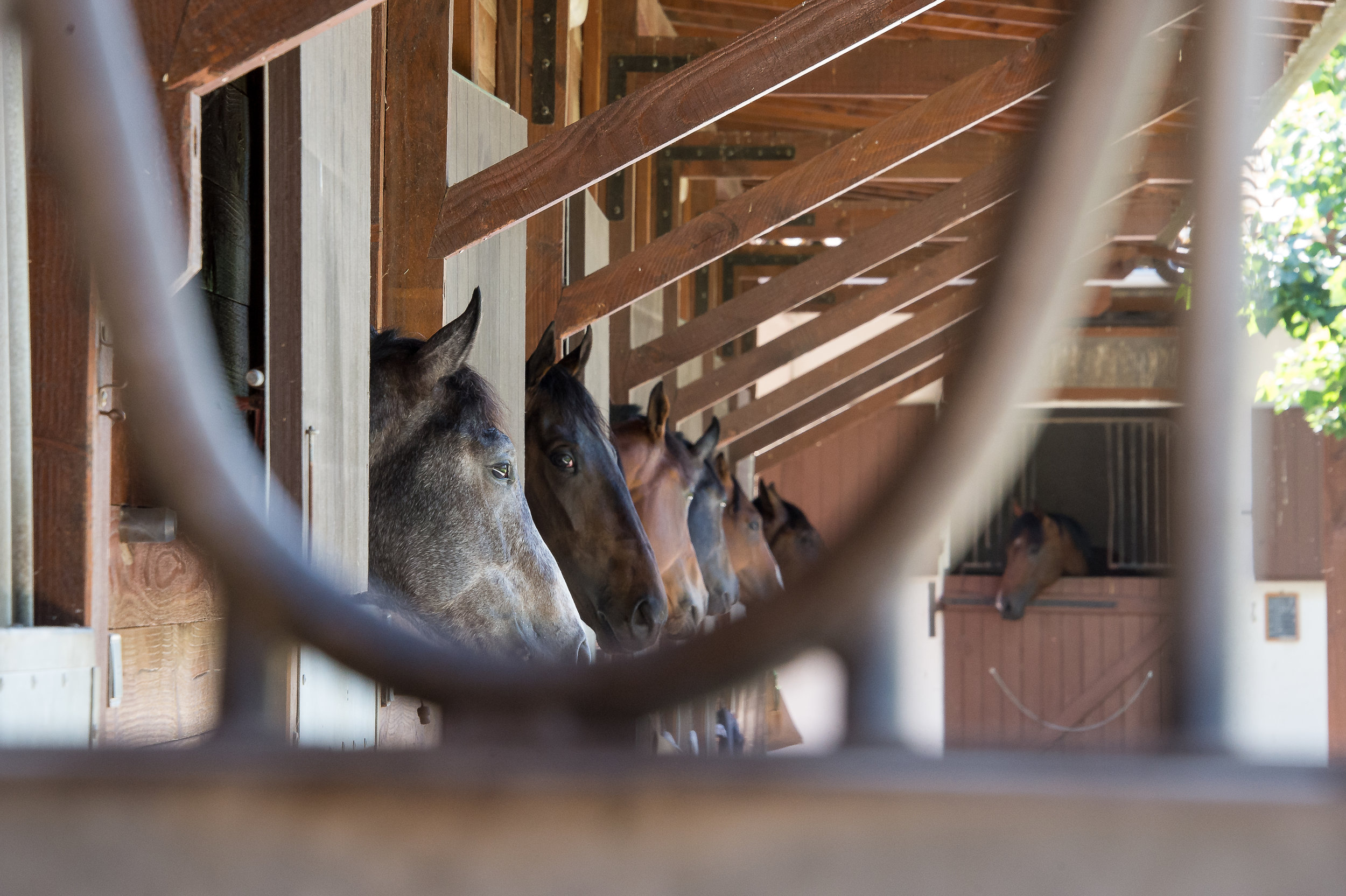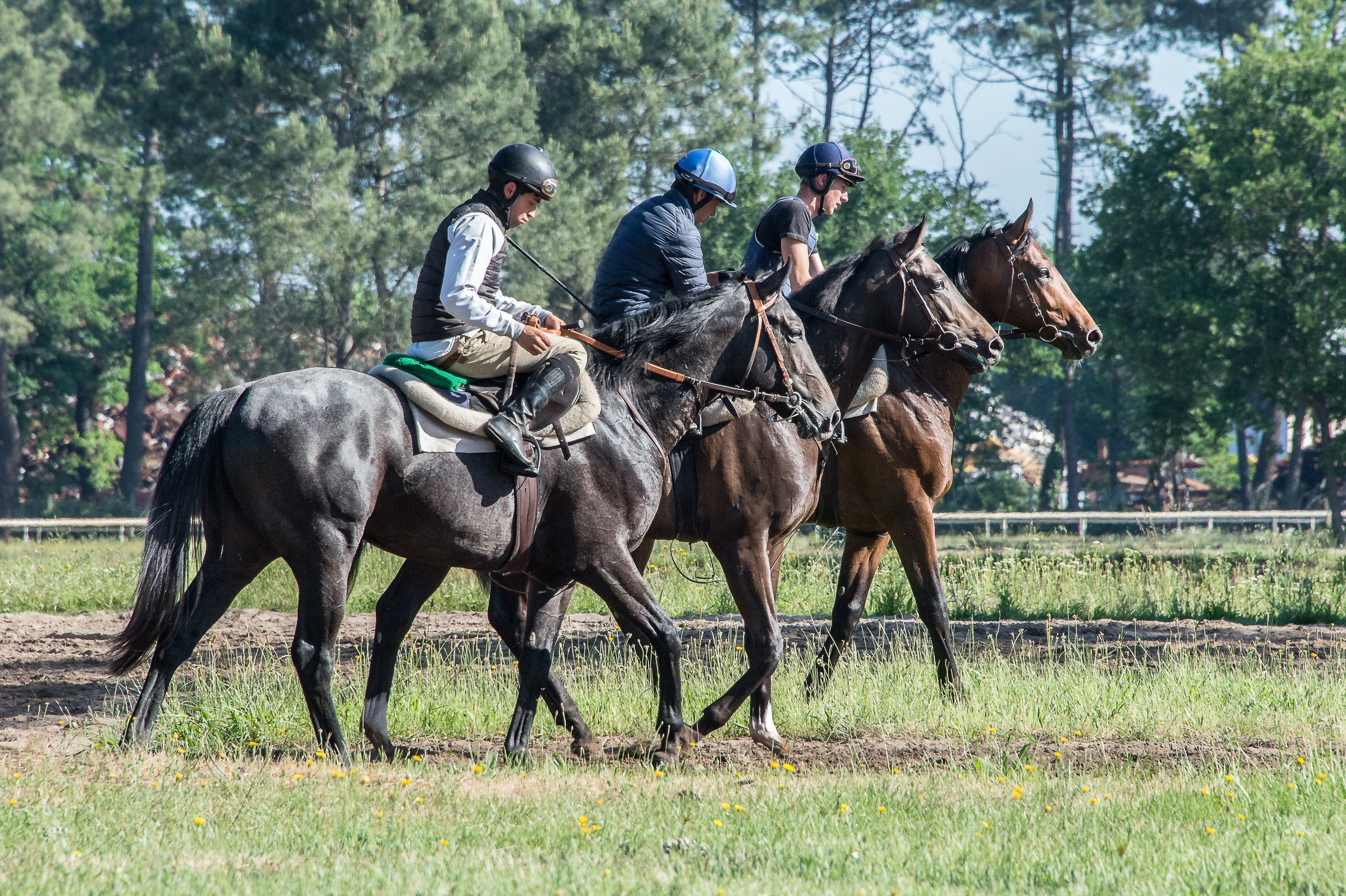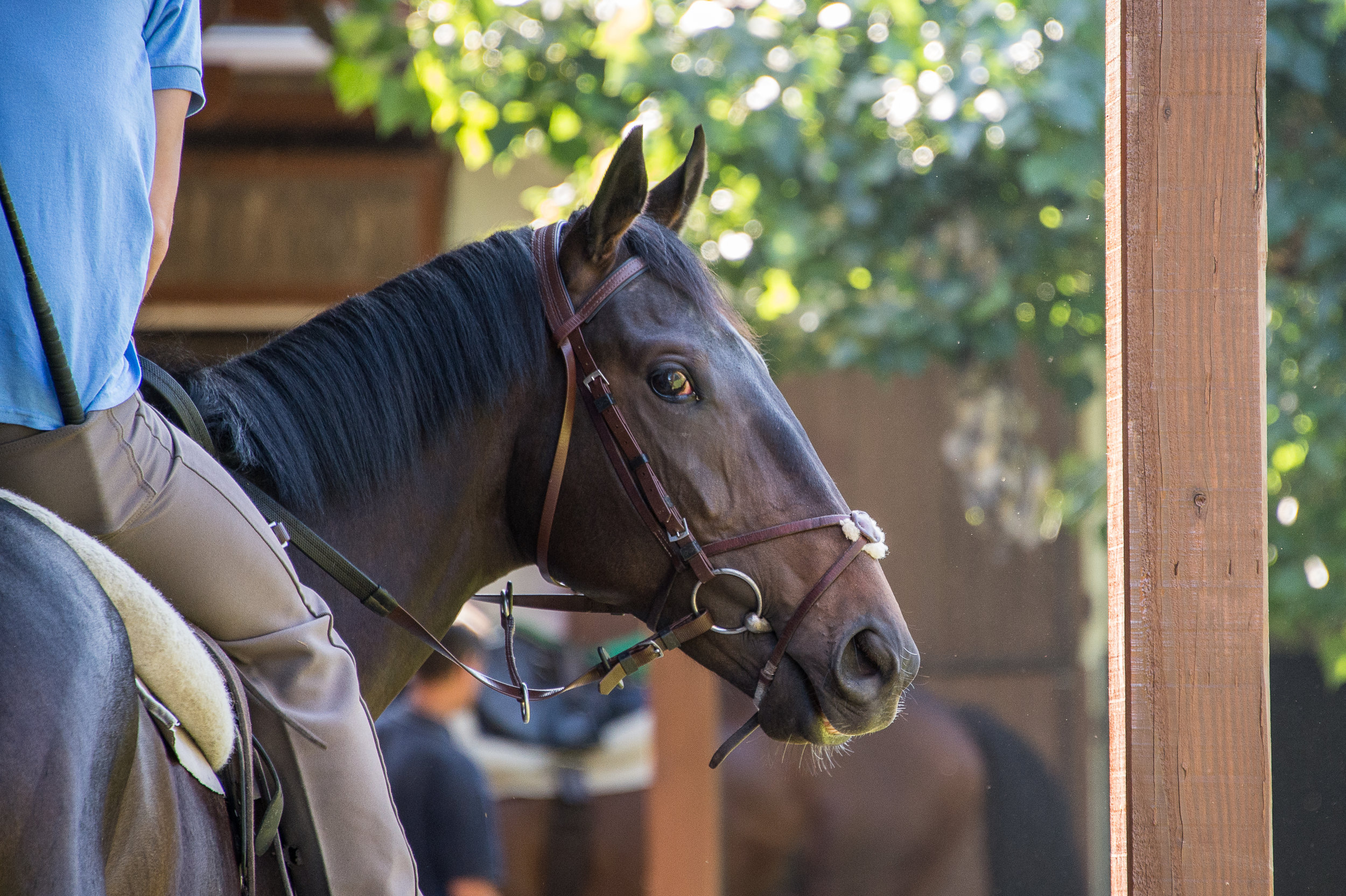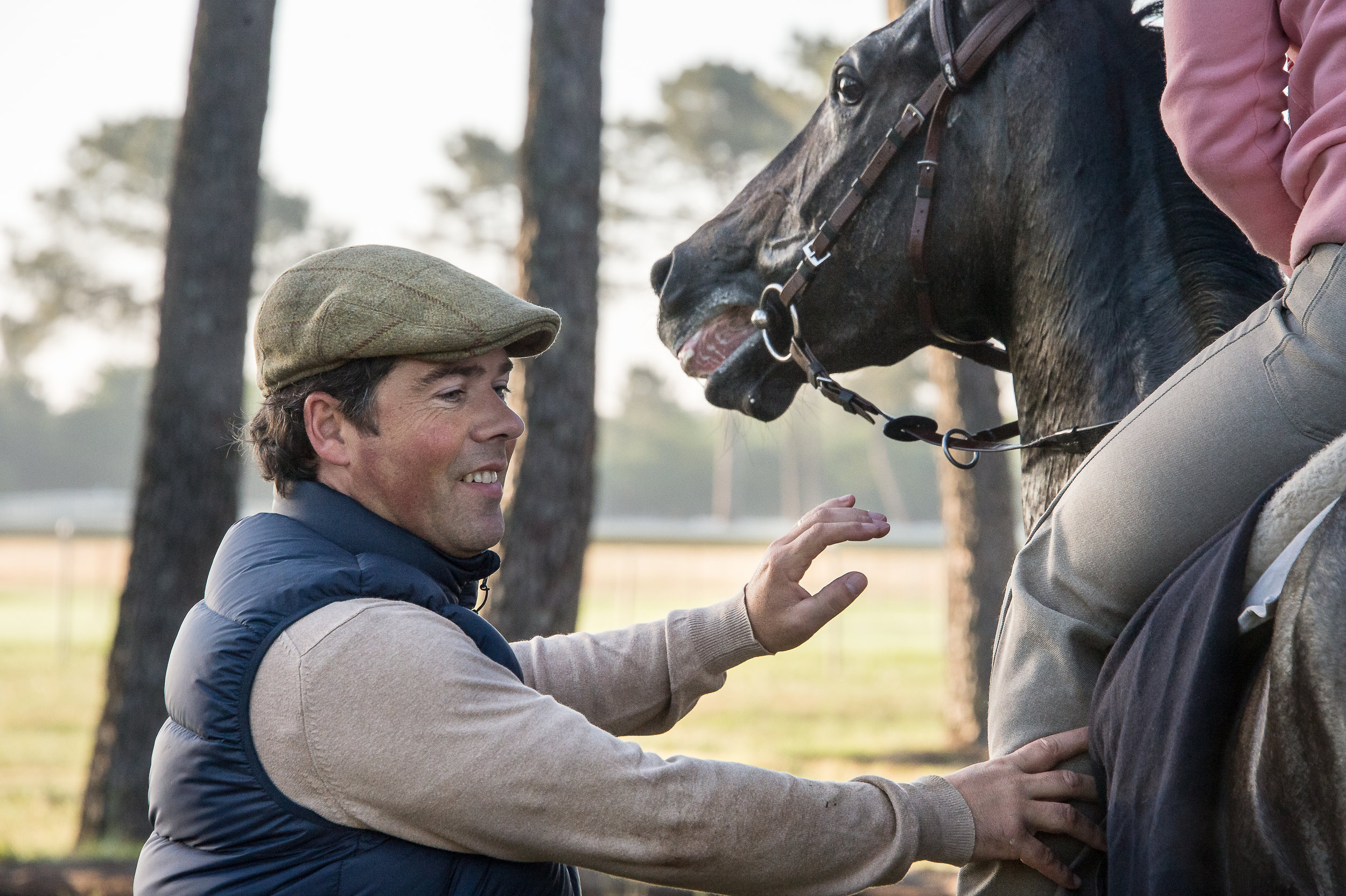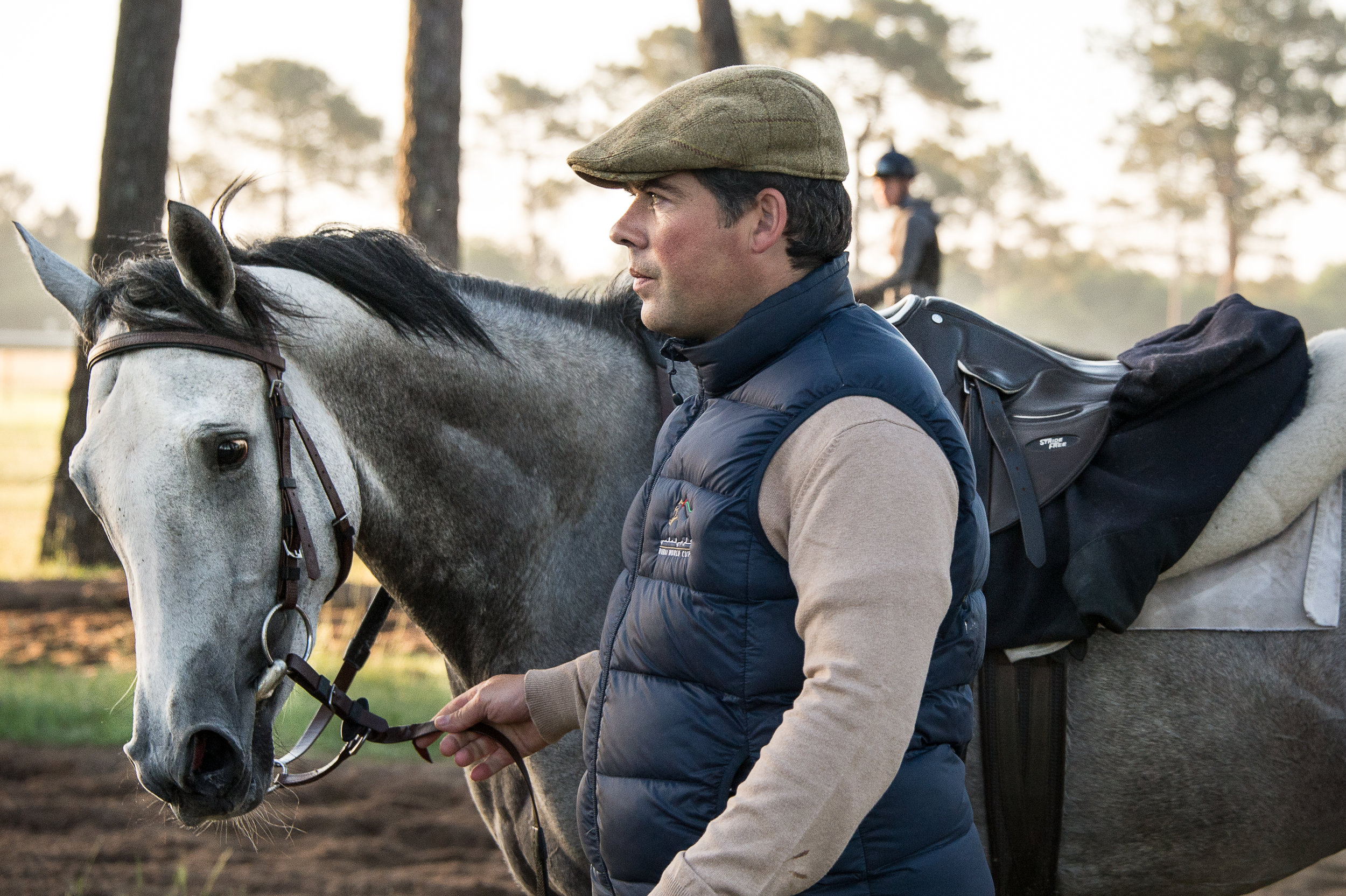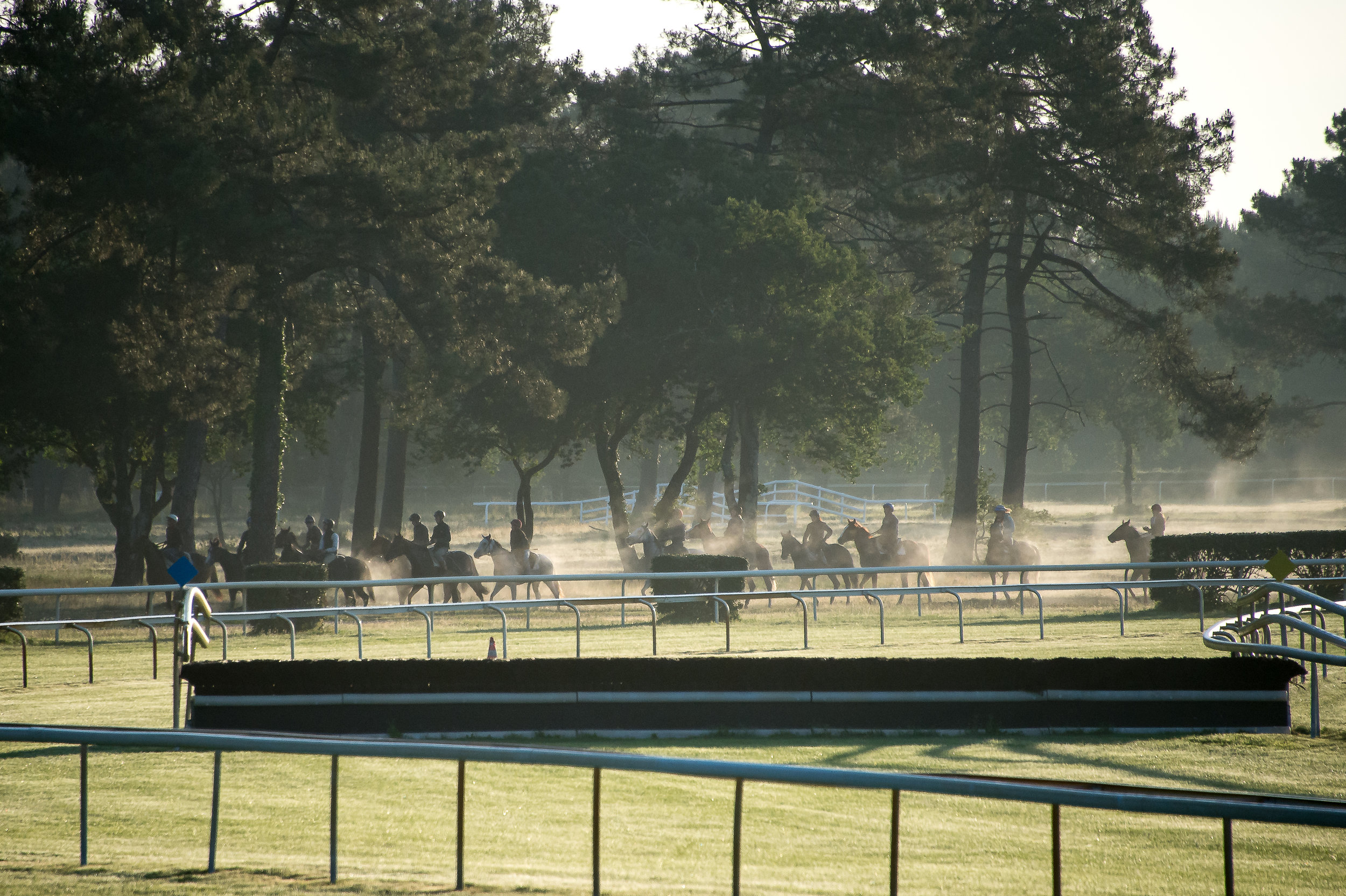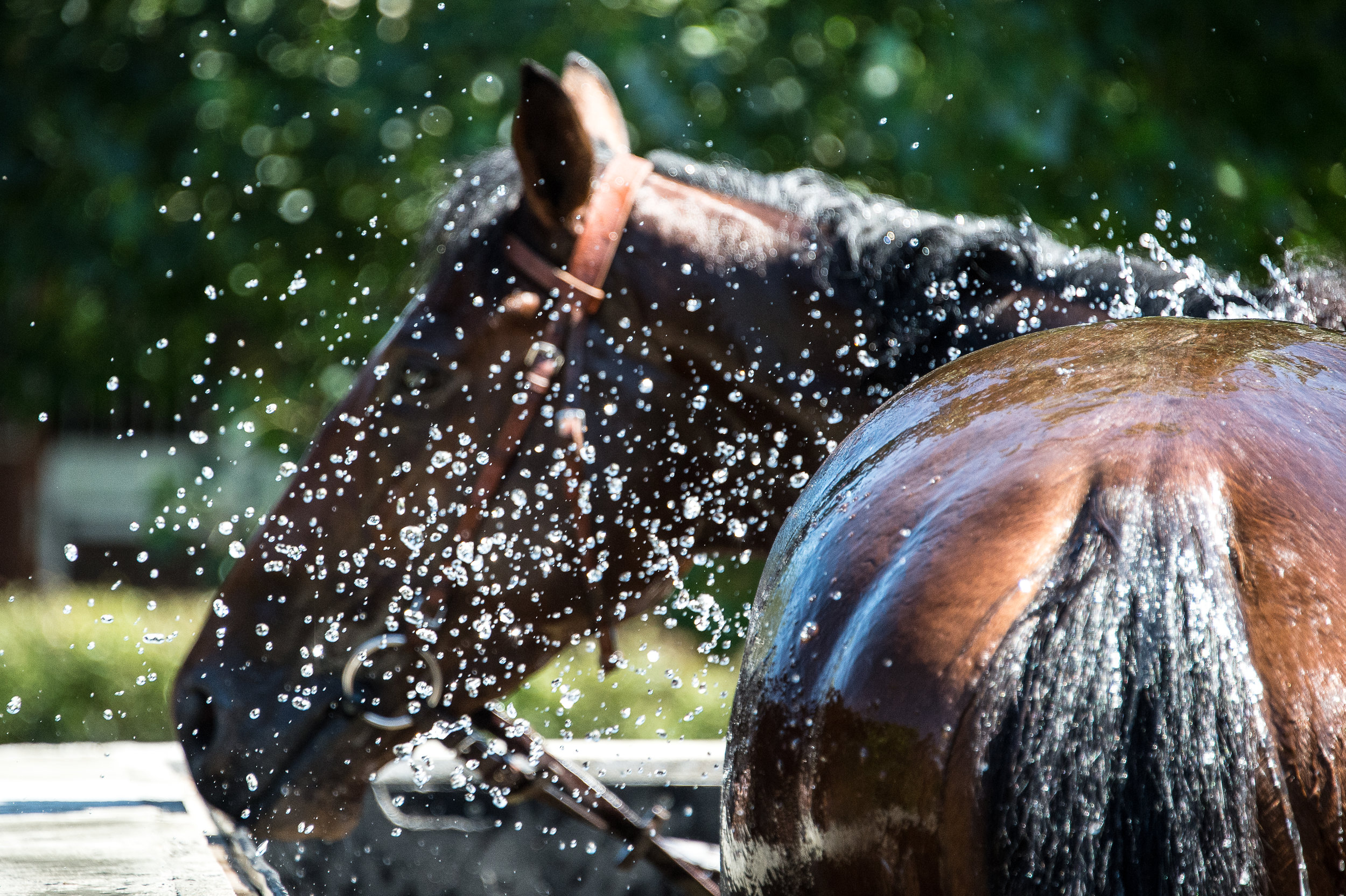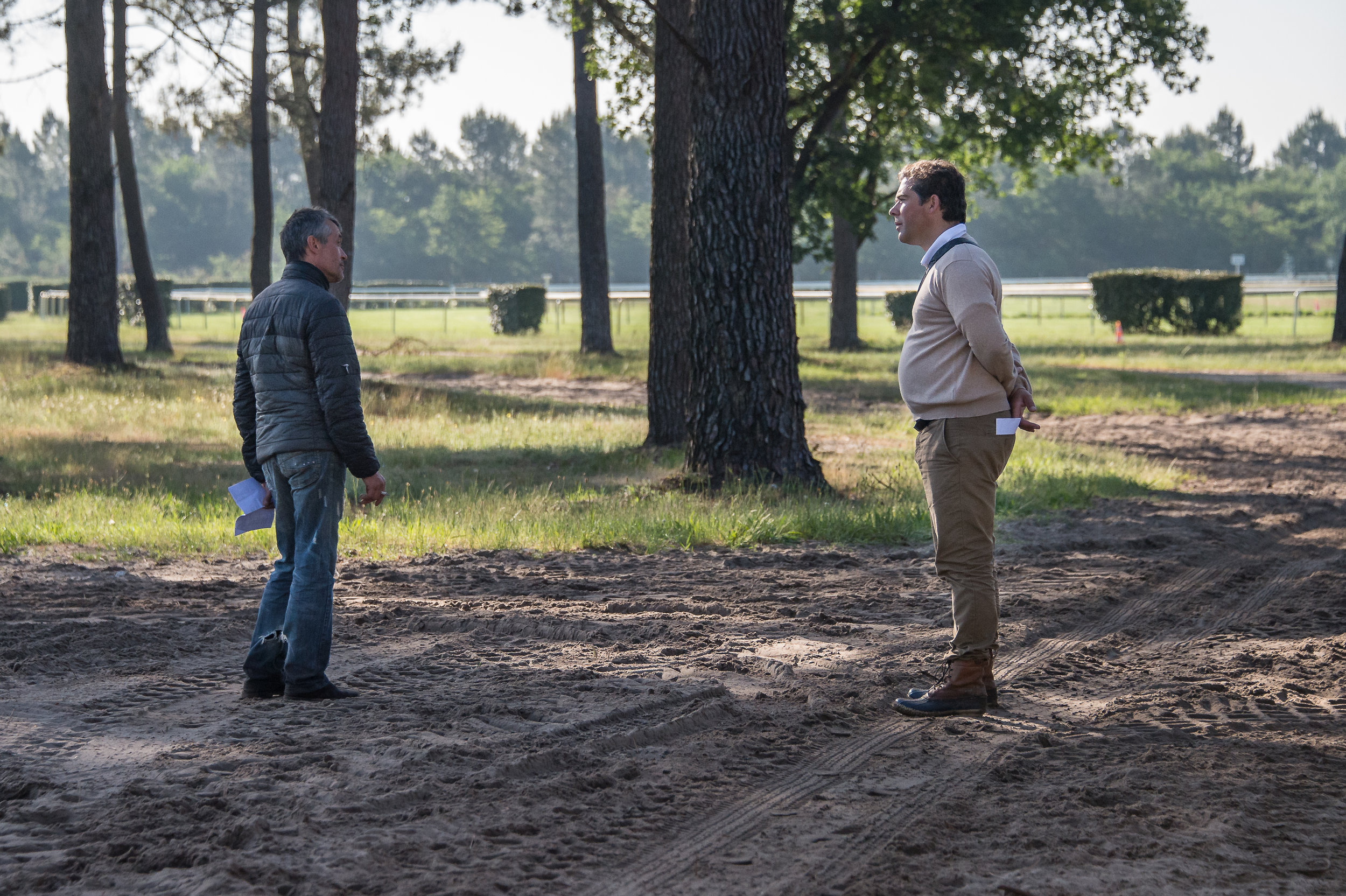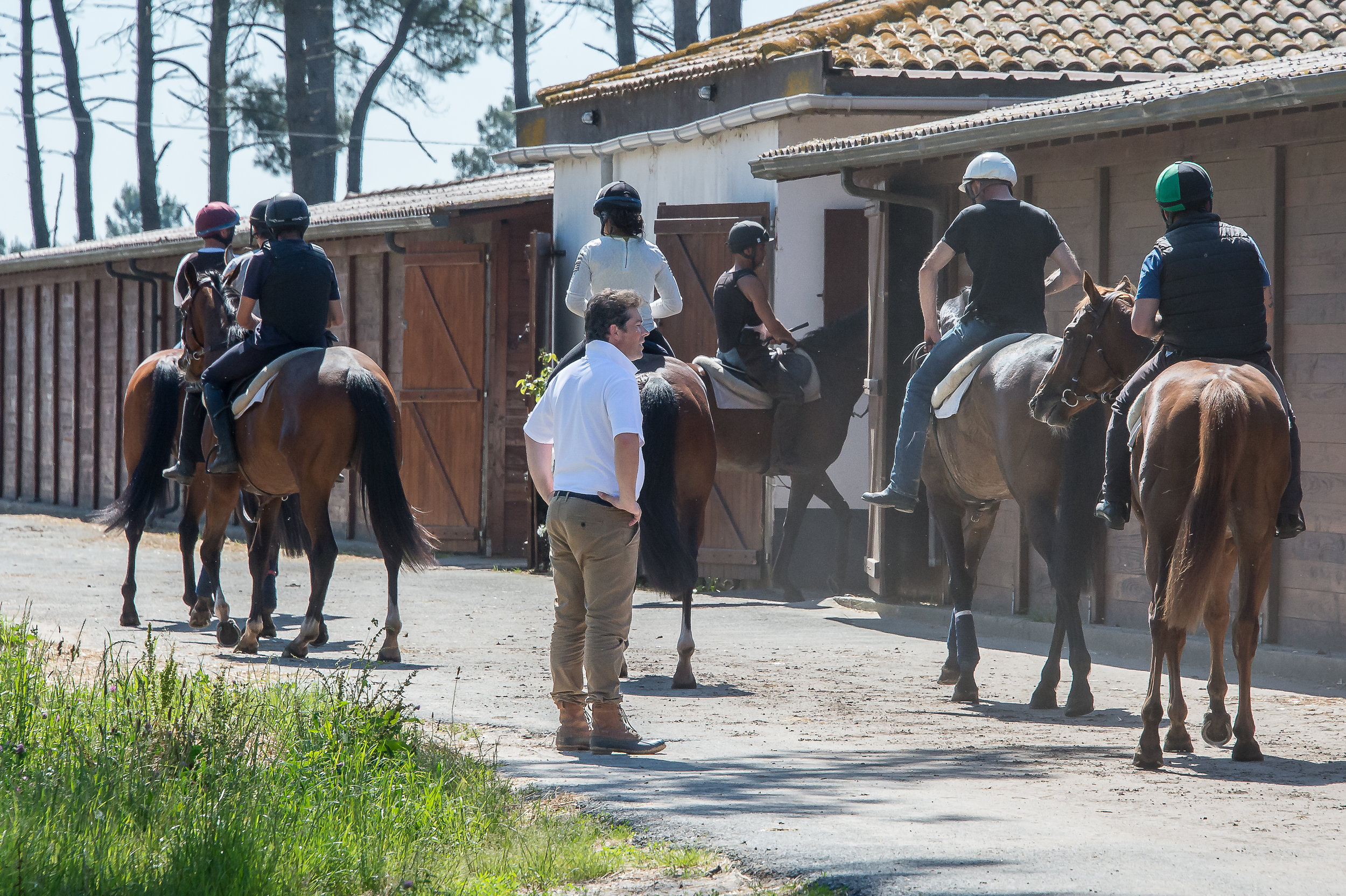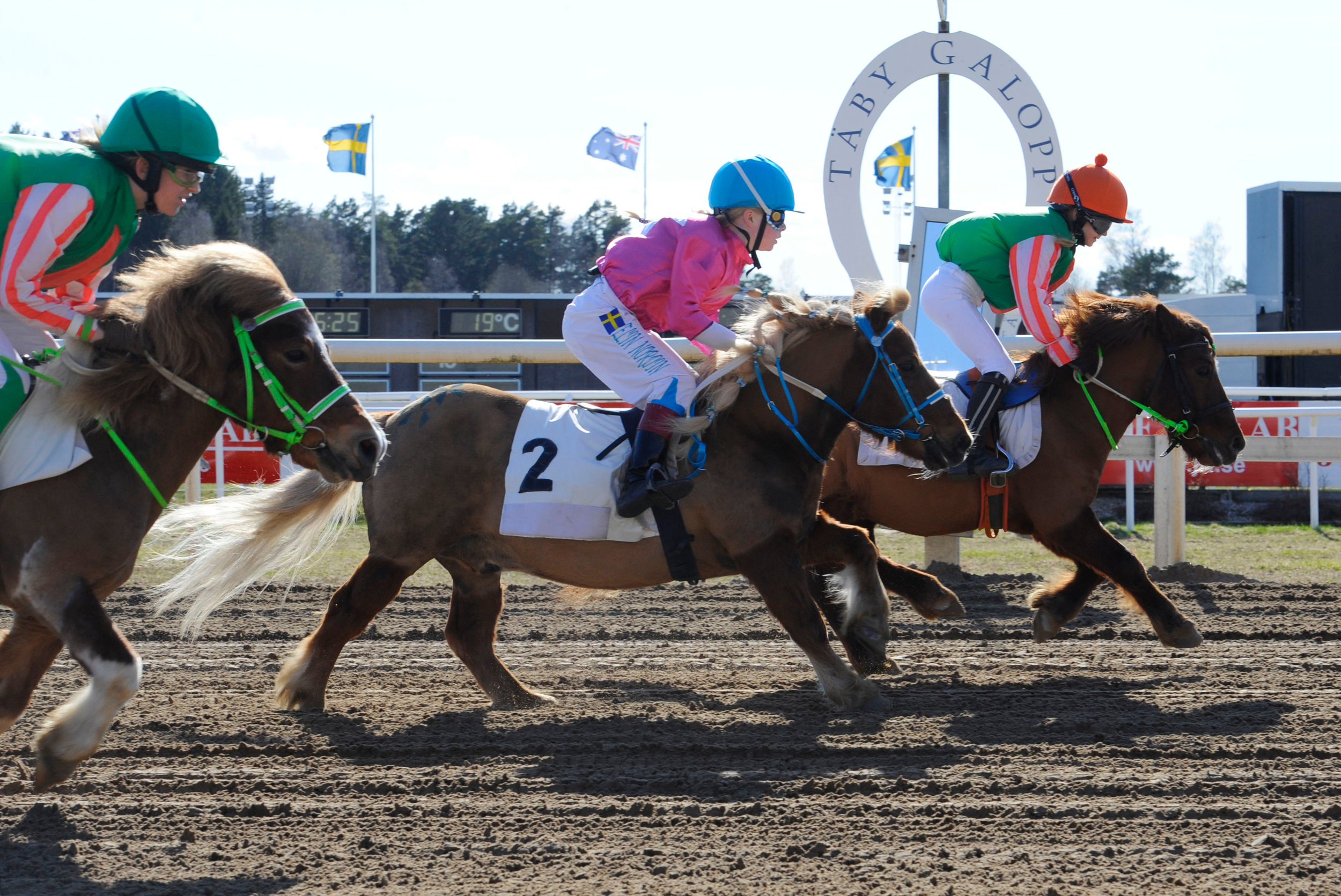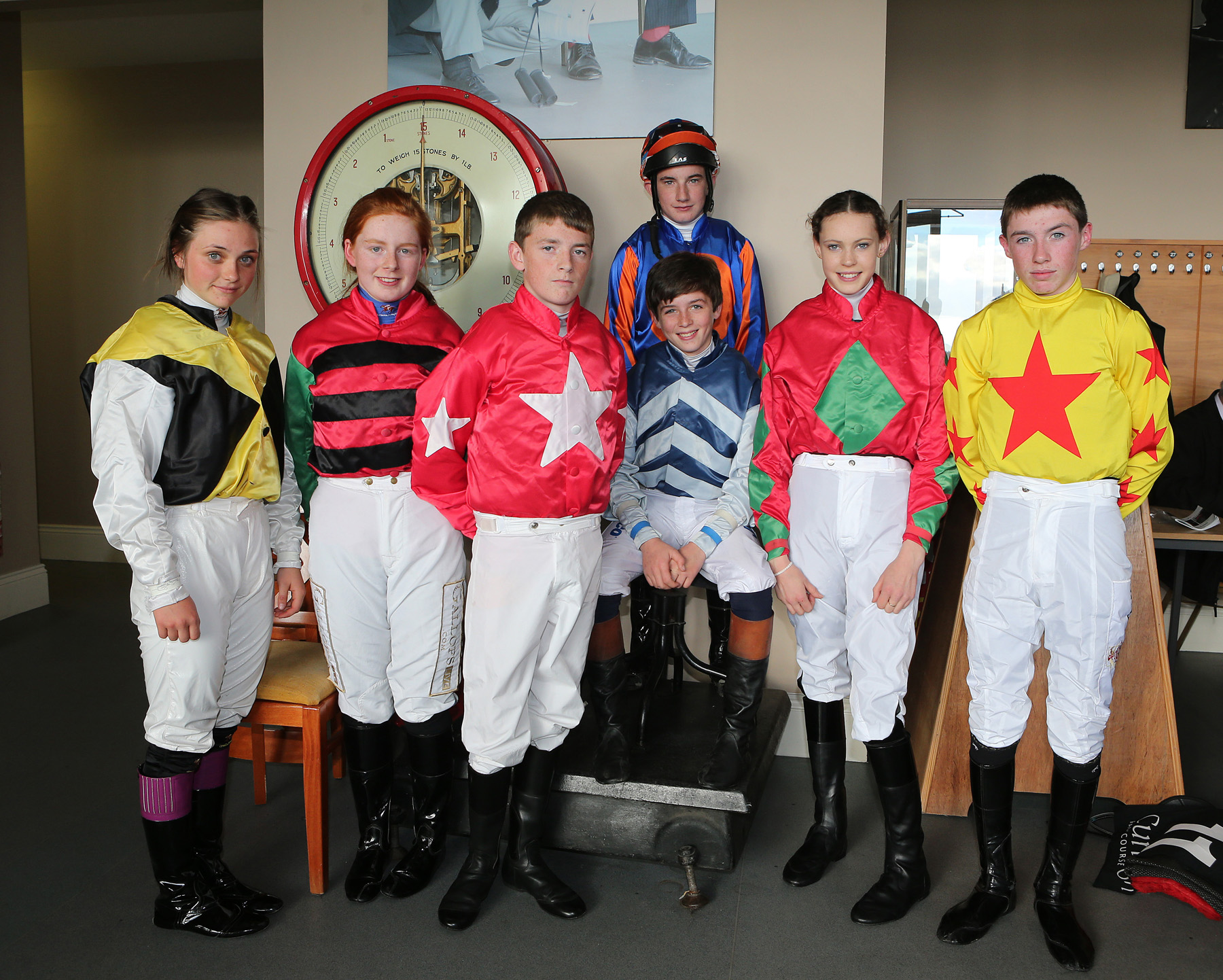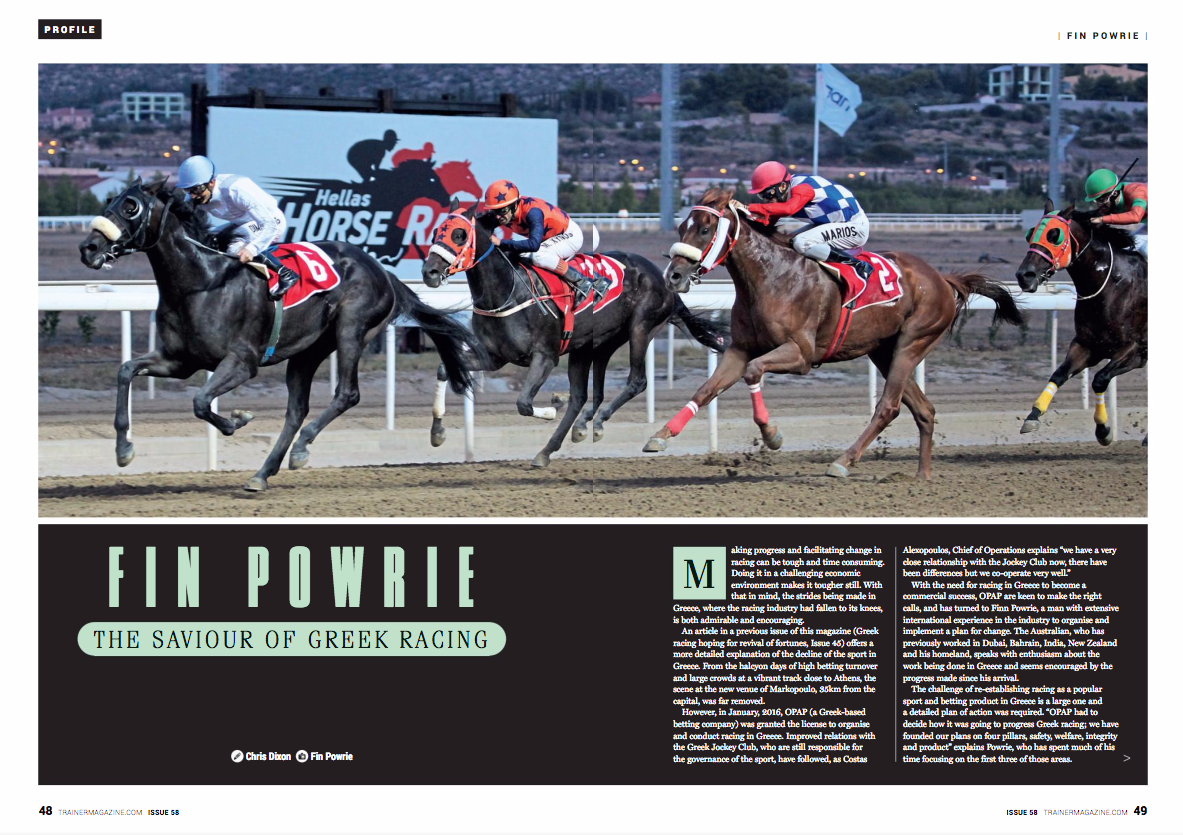Christophe Ferland - A man with a plan
First published in European Trainer issue 58 - July - September 2017
Click here to order this back issue!
When Christophe Ferland is talking to you, you have his full attention.
He might need to break off the interview for a few moments to deal with something at the yard or on the phone, or to look at a horse, but he will resume exactly where he stopped, without missing a beat. Is this ability to concentrate 100% on what he is doing one of the ingredients in the recipe for the success of French Flat racing’s rising star?
With a jockey-turned-head-lad for a father, Ferland cannot remember the first time he saw a horse. “But I do remember going racing with my father, although he was no longer a jockey at the time, and loving it!” he says now.
So, after a few years riding out in the morning for several renowned trainers including David Smaga and starting in a dozen races as a gentleman rider “without much success or passion, as I really lacked competitive spirit at the time,” he decided that training really captivated him. His mind was made up: he would be a trainer.'
“You have to keep searching – why something went wrong and how to correct it, what could still be improved even when things go well... Never take anything for granted.”
GALLERY
Generation X
First published in European Trainer issue 58 - July - September 2017
Click here to order this back issue!
It's been a great spring for Irish horseracing, the record 19 wins at the Cheltenham Festival having been followed within a matter of weeks by Aidan O'Brien's double in the Newmarket Guineas.
But, believe it or not, there is a branch of the sport in which Britain is in the ascendancy while Ireland seems in dangerous decline, and this is pony racing, an unheralded but vital part of racing's grassroots and an excellent source of hard-working, talented riders.
Listening to people talk about the storied history of pony racing in Ireland, one would imagine it would be secure forever. "Practically every top jockey in the country has gone through pony racing at one stage or another," I was told by Denis Egan, The Turf Club's chief executive. But neither The Turf Club nor any other authority has responsibility for nurturing the health of pony racing, which is falling on hard times with a consequent loss of fixtures and equine talent.
Meantime, the sport, having long been popular in other European countries, is finally taking hold in Britain, where it was all but unknown 15 years ago. "I can't speak highly enough about it and the people who organize it," says Paul Nicholls, the 10-times champion jumps trainer, who regrets that no such introduction to jockeyship was available when he was a lad.
His daughter, Megan, and his nephew, Harry Derham, are among a swelling list of British jockeys who cut their teeth in pony racing. Others include Sam Twiston-Davies, Sean Bowen, Lizzie Kelly, Tom Marquand, and Hollie Doyle. The Pony Racing Authority (PRA) reckons that more than 100 of its graduates now hold a jockey’s license of some kind.
Hoof - Surface Interaction Study
By Amy Barstow BVetMed, MRCVS, PhD Candidate
First published in European Trainer issue 58 - July - September 2017
Click here to order this back issue!
In racehorses, the identification of risk factors for lameness has driven research efforts into lameness prevention strategies.
The foot-surface interaction is of particular interest and has been the subject of a lot of research. To date this has primarily been through the investigation of ground-surface composition and properties, in addition to the effects specific surfaces have on the horse’s way of going. Changes in speed, stride length, and frequency have been observed, and the vibrations (shock waves) resulting from the initial foot-surface collision have been measured on different surfaces. However, the surface represents only half the story: what about the foot? In practice it is the foot that we are more likely to influence on an individual level.
As part of my PhD studies at the Royal Veterinary College (RVC), we have investigated whether it is beneficial to use novel farriery techniques such as ‘sole-packing’ and padding materials to improve shock absorption in horses exercising upon both firm and soft surfaces. This work has been kindly funded by the Horse Betting Levy Board (HBLB) and the RVC Paul Mellon Trust. Here we will discuss the intricacies of the foot-surface interaction, what is already known about the effect of surface, and how our research into the use of sole-packing materials might be another arrow to our bow in the prevention of lameness in racehorses.
The true cost of training
First published in European Trainer issue 58 - July - September 2017
Click here to order this back issue!
The FRBC French Annual Review 2016-2017 shows that in 2016, the total distributed prize money in Britain, Ireland, France, and Germany was €528,357,185.
It’s interesting to note that in France (95%) in particular and in Ireland (65%), prize money is pretty much self-funded via racing organisations, which contribute only 48% to British prize money and as little as 4% to German prize money. The contribution from owners stands at 4% in France, 7% in Germany, 16% in Britain, and 23% in Ireland.
With prize money recognised as the lifeblood of racing, it’s interesting to see where it originates and even more interesting to see where it goes. In Issue 39 of European Trainer (Autumn/Winter 2012) we featured the distribution of prize money, jockey and trainer fees, and percentages. At that time there were 1,500 licensed trainers throughout Europe chasing 10% of winning prize money, from which further deductions in many cases brought that down to 7%.
The figures have changed little since, and it’s no surprise that the majority of trainers continue to survive largely on the trading of horses. Selling winning horses out of a stable can hardly be viewed as a sustainable business plan and it is never going to help trainers in the lower tier break through into the higher ranks when their best horses are sold and moved to other yards.
With so many relinquishing their licence each year due to rising costs and the inability to make training pay, there have been recent calls to put more in place to help trainers. Horse Racing Ireland (HRI) earlier this year launched a trainer marketing scheme to assist in attracting new owners, as well as the new “Experience It” campaign to provide potential owners with the experience of a day at the races as an owner. HRI also plans to assist in the collection of training fees to protect against non-payers.
Gaining new owners and ensuring that they pay is only half the battle, however, and the high-profile removal of Gigginstown Stud-owned horses from Willie Mullins has highlighted the problem of the fees themselves. Mullins is not alone in maintaining the same weekly fee for 10 years, and the example set by Gigginstown shows the dangers of increasing fees when that is no longer viable. Wages, insurance, utility bills, diesel, and feed and bedding prices have all increased during the past decade but most training fees have not, which means trainers have effectively reduced their fees each year.
The importance of identifying lower and upper limb lameness
First published in European Trainer issue 58 - July - September 2017
Click here to order this back issue!
In thoroughbred racing injuries to the limbs are a major welfare and safety concern and are the leading reason for horses to be out of training.
Lameness is the number one reason for a high turnover in racing stables and, as many trainers know, it has huge financial implications for the owner, trainer, and the racing industry in general. Previous investigators have found that just over 50% of horses in training in England and Germany experience lameness during training and approximately 20% of horses in the UK suffer lameness that prevents them from returning to training. With this amount of horses on lay-up, it can be difficult to run a profitable racing stable.
In addition to having an impact on the horse’s welfare and future career, severe musculoskeletal injury also poses a serious safety concern for jockeys. The main reason for a jockey to suffer injury in a race is a horse sustaining a catastrophic injury or sudden death. Researchers in the US found that a jockey was 171 times more likely to be injured when a horse they were riding in a race died. In thoroughbred racing, the most common life-threatening injury to horses involves fractures of bones in the fetlock. Therefore, the best way we can improve safety and welfare of both horses and jockeys is to highlight risk factors for fractures in an attempt to prevent these catastrophic injuries from occurring.
The Saviour of Greek Racing
First published in European Trainer issue 58 - July - September 2017
Click here to order this back issue!
Making progress and facilitating change in racing can be tough and time consuming. Doing it in a challenging economic environment makes it tougher still. With that in mind, the strides being made in Greece, where the racing industry had fallen to its knees, is both admirable and encouraging.
Making progress and facilitating change in racing can be tough and time consuming. Doing it in a challenging economic environment makes it tougher still. With that in mind, the strides being made in Greece, where the racing industry had fallen to its knees, is both admirable and encouraging.
The article “Greek racing hoping for revival of fortunes” published in Issue 45 of European Trainer offers a more detailed explanation of the decline of the sport in Greece. The scene at the new venue of Markopoulo, 35 kilometres from the capital, was far removed from the halcyon days of high betting turnover and large crowds at a vibrant track close to Athens.
However, in January, 2016, OPAP (a Greek-based betting company) was granted the licence to organise and conduct racing in Greece. Improved relations with the Greek Jockey Club, who are still responsible for the governance of the sport, have followed, as Costas Alexopoulos, chief of operations, explains. Alexopoulos says, “We have a very close relationship with the Jockey Club now. There have been differences but we cooperate very well.”
With the need for racing in Greece to become a commercial success, OPAP are keen to make the right calls, turning to Fin Powrie, a man with extensive international experience in the industry, to organise and implement a plan for change. The Australian previously worked in Dubai, Bahrain, India, New Zealand, and his homeland. Powrie speaks with enthusiasm about the work being done in Greece and seems encouraged by the progress made since his arrival.
Does nutrition factor in injury, repair and recovery?
First published in European Trainer issue 58 - July - September 2017
Click here to order this back issue!
Lost training days through injury or infection are problematic for trainers, both practically and commercially. It is a stark fact that 50% of thoroughbred foals, bred to race, may never reach the racecourse.
Lost training days through injury or infection are problematic for trainers, both practically and commercially. It is a stark fact that 50% of thoroughbred foals, bred to race, may never reach the racecourse. In young thoroughbreds, musculoskeletal problems have been cited as the most common reason for failure to race and this appears to continue to be a major issue for horses in training.
An early study carried out in 1985 in the UK reported that lameness was the single biggest contributor to lost days of training, and subsequent research 20 years later found that this was still the case, with stress fractures, which involve normal bone being exposed to abnormal stress, being cited as a significant underlying cause. Perhaps not surprisingly, two-year-olds were more susceptible to injury than three-year-olds. Whilst there are of course many other reasons – including muscular issues such as tying up, respiratory problems, and viral infection – why horses may fail to train, in this survey medical issues accounted for only 5% of the total training days lost.
Coverage of the Merial Raceday - York 2017
First published in European Trainer issue 58 - July - September 2017
Click here to order this back issue!
Over 40 vets from around the UK attended the continuing professional development event titled ‘How to optimise the respiratory effects on performance’ at York Racecourse this May. The event, organised by European Trainer Magazine and Merial Animal Health, featured a panel of expert speakers and was co-sponsored by Connolly’s RED MILLS and Haygain. Louise Jones BSc, MSc attended the seminar and reports on the key messages as follows.
Functional Significance of Upper Airway Obstructions - Dr Kate Allen
Dr Kate Allen, from Langford Vets, commenced proceedings, explaining that whilst upper airway obstruction (UAO) is second to lameness as the most common cause of poor performance, it is difficult to quantify its significance on athletic performance.
UAO is caused by a narrowing of the airways, often as a result of the collapse of the varying upper airway structures. However, Dr Allen emphasised that it is a complex condition and in almost half of the cases involves the concurrent collapse of multiple structures.
Horses suffering from UAO initially attempt to maintain airflow by increasing inspiration time and decreasing respiratory frequency. However, if this is unsuccessful then the amount of oxygen available for the muscles to work effectively will be reduced, resulting in impaired performance. The degree to which athletic performance is affected, especially in the elite horse, will obviously depend on several factors, including....
Staff Focus: Work experience and the pathways into racehorse care
First published in European Trainer issue 58 - July - September 2017
Click here to order this back issue!
The pedigrees of racing’s human participants are often as impressive as the horses in their care, but the industry is doing all it can to attract and welcome newcomers from outside of any equestrian background in the hope they might establish future dynasties of their own.
A shortage of staff Europe-wide means it is vital that new initiatives are introduced and supported, to encourage young people to seek careers within racing.
A traditional route into racing has always been simply knocking at a door and asking. While many trainers will welcome schoolchildren looking to gain experience, not every trainer finds them useful and not every young person finds the experience useful. The key lies in matching the correct yards to those taking a keen interest, and the Racing To School programme in Britain and the similar Go Racing Kids’ Club in Ireland are proving beneficial in that respect.
EMHF - Welfare at the top of the agenda
First published in European Trainer issue 58 - July - September 2017
Click here to order this back issue!
There is debate over the appropriateness of the use, in the context of horseracing, of the term ‘social licence.’
There is debate over the appropriateness of the use, in the context of horseracing, of the term ‘social licence.’ It is heard in our world with increasing frequency, but opponents point to the fact that it implies a formal power – which society, of course, does not hold, in any direct sense – to sanction or prohibit the sport. But it is surely incontestable that racing’s future is brighter where it enjoys broad public support and more precarious where there is widespread opposition. There is encouraging evidence that racing ‘gets’ this.
As public sensibilities around the world shift towards ever greater concern for the wellbeing of animals, so there are numerous examples of racehorse welfare moving ever higher up the agenda of racing’s administrators. The tone has been set at the very top – it has been a mantra of the International Federation of Horseracing Authorities’ (IFHA) chairman Louis Romanet in recent years that horse welfare must be central to the efforts of national racing authorities.
Developing the young foot
First published in European Trainer issue 58 - July - September 2017
Click here to order this back issue!
I remember my first yearling and two-year-old-in-training sales at Keeneland, Woodbine, and Tattersalls.To my untrained eye, and despite tracing backwards through the bloodlines, each and every horse appeared sound and fit, looking like a million bucks.
Although few horses ever actually sold for that amount, every inch of those young racehorse wannabes was gleaming from nose to toes. Even their feet were buffed and polished as perfectly as a pair of Usher’s coveted shoes.
Possibly because young horses for sale are primped and preened to the gills, few potential buyers actually ever pick their feet up to inspect them. Instead, buyers tend to focus on joints and throats, using the extensive repository to review joint radiographs (X-rays) and scoping prospects’ throats. “The horses in the September (yearling) sales are simply glamorous, including their feet. I would estimate that only 10% of buyers ever actually pick up at foot at those sales,” remarks Sam Christian, a Kentucky-based farrier servicing several top-level operations such as Shadwell Farm.
In general, the expectation appears to be that if the throat and joints are clear and the young horse appears straight, their feet must also be in good condition. While some horses may have hidden surprises once their party shoes are removed (indicating that some of those fancy feet are in fact simply mutton dressed as lamb), Mark Dewey, a highly sought-after racing farrier, attests this is not generally the case.
Trainer of the Quarter - Matthieu Palussiere
First published in European Trainer issue 58 - July - September 2017
Click here to order this back issue!
“I would definitely say she is right up there with my top 4 or 5 fillies I’ve owned, there were 4 or 5 ‘millionaire’ horses in that race and she showed them. For so many people, this meant so much and everyone was emotional about this win. I would like to credit my incredible team behind us in Ireland who have been with us for a long time, and now in France - it is as much their win as ours”


